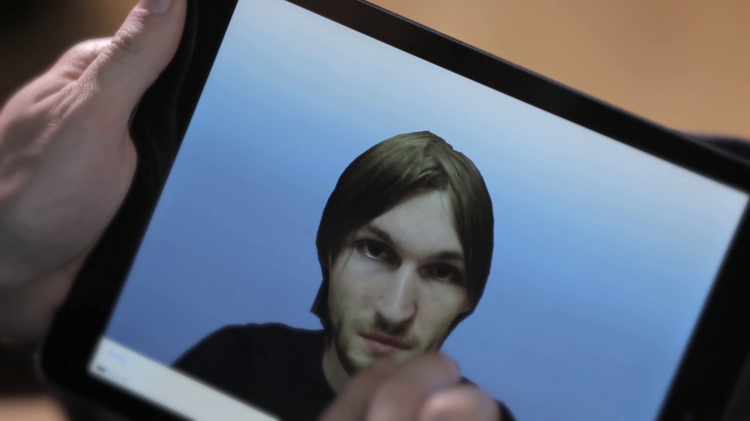3D scanning is about to get a whole lot more consumer friendly thanks to a new app from visual technology company Itseez.
The company is releasing Itseez3D today, its currently-free iPad app that works with the Occipital Structure sensor, and makes 3D scanning available to consumers.
With Itseez’s app and the sensor, you can scan any object, or even a human head quickly and easily, and then either send the scan through email as an attached .ply or .obj file, or upload it into SketchFab, a browser-based 3D design viewer and online portfolio. While it can currently only be turned into a 3D-printed object through additional, manual steps, the company plans to make that process available from within the app in future versions.
To scan something, you either circle around the object while holding the iPad or rotate the object.
“It’s an application for the iPad that can generate very realistic 3D models. The application is intended to be used by consumers,” said Itseez cofounder and chief executive Victor Erukhimov in an interview with VentureBeat.
“The sensor streams 3D data to your iPad. It streams pixels, but each pixel has 3D coordinates,” he said. It’s those pixels’ coordinates that the app then reassembles into the 3D model of the scanned object.
The company also said that it’s the first one to provide color scanning for mobile devices, something that was previously only possible with standalone 3D scanners. This is opening up new possibilities for what consumers, hobbyists, and professionals can accomplish with 3D scanning. Erukhimov said that they’re hoping to see all kinds of uses for it now that the app is available, with ecommerce and design as likely popular uses. Online retailers can easily scan their inventory and display it on their sites.
Occipital’s Stucture sensor, which goes for $499 and includes the Skanect Pro for wireless streaming to other devices, was launched on Kickstarter in the fall of 2013 and raised more than $1.2 million. Last June, the company acquired ManCTL, a company that makes 3D scanning technology that captures images from Microsoft Kinect or Asus Xtion cameras and turns them into 3D models.
“We’ve been talking to Occipital for a while, and we saw that they’ve been building a really great device, and we’ve been playing with scanning for a while. So once we saw that this 3D sensor will be coming to mobile devices, we thought this would be an excellent opportunity to do something with 3D scanning,” said Erukhimov.
In comparison with other 3D scanning options, the Occipital sensor is relatively consumer-friendly in terms of pricing and offers the flexibility of being small and being attached to an iPad. The crowdfunded Mattermark scanner runs for C$599 (about $577), and the Makerbot Digitizer goes for $799, just to name a couple. Both are standalone scanners.
Erukhimov did bring up that there are still limitations to this scanning technology, namely when it comes to glass or highly reflective surfaces. These are not picked up well and appear as empty space in the scan. Lighting is also important when making 3D scans.
Itseez was founded in 2005 by Erukhimov, Sergey Molinov, and Alexander Bovyrin. The company’s research and development operations are located in Nizhny Novgorod, Russia.
VentureBeat's mission is to be a digital town square for technical decision-makers to gain knowledge about transformative enterprise technology and transact. Learn More

